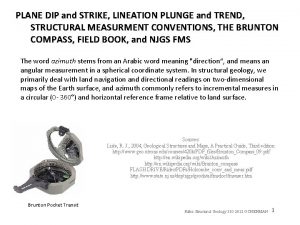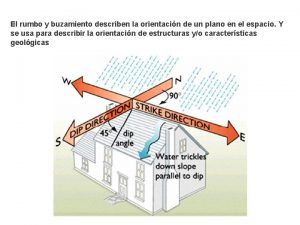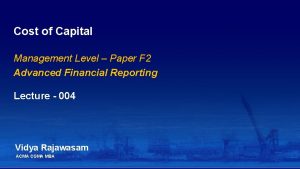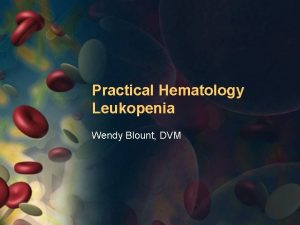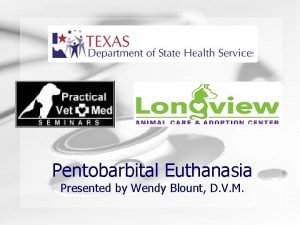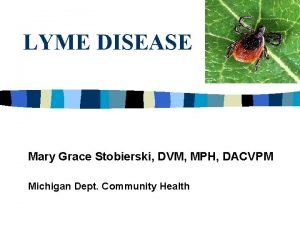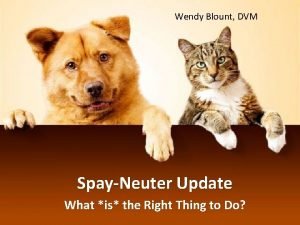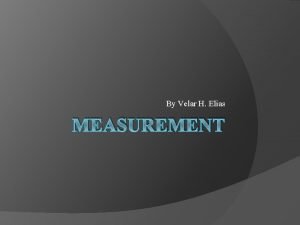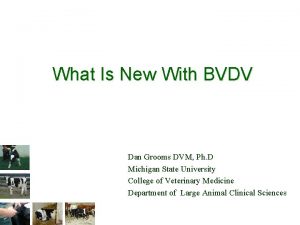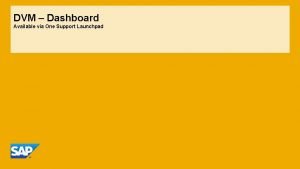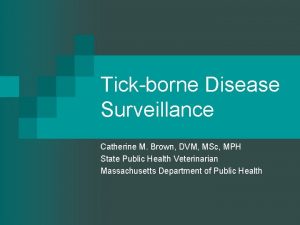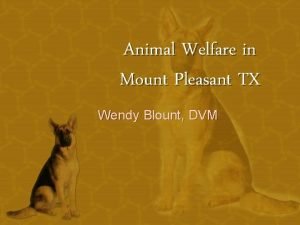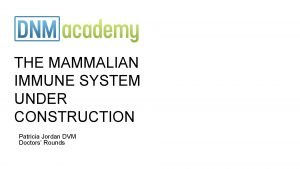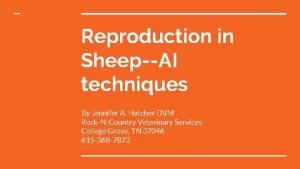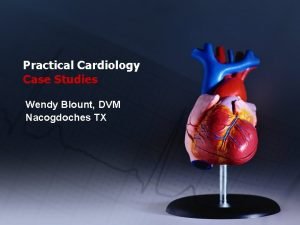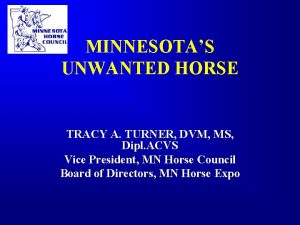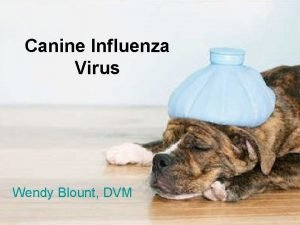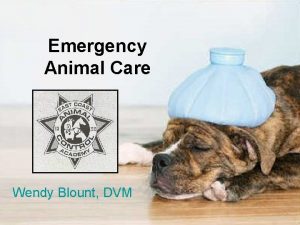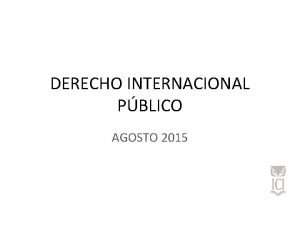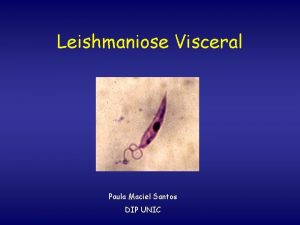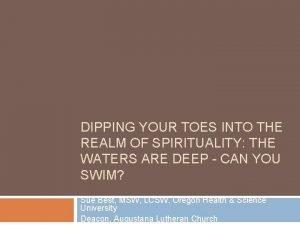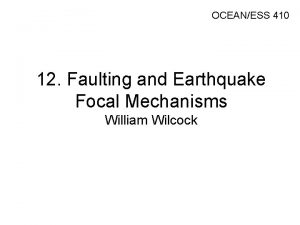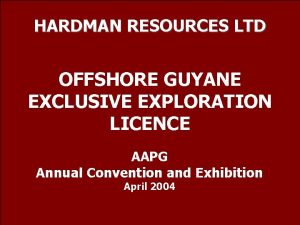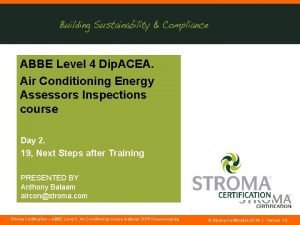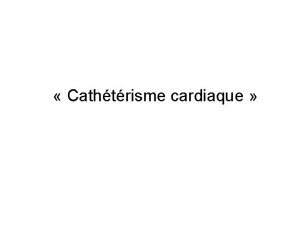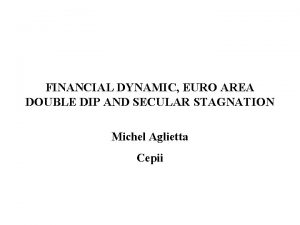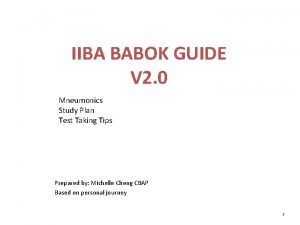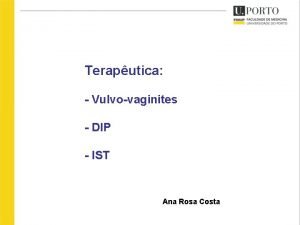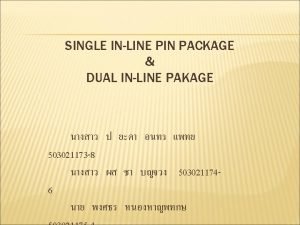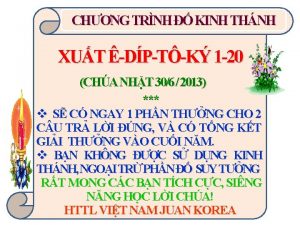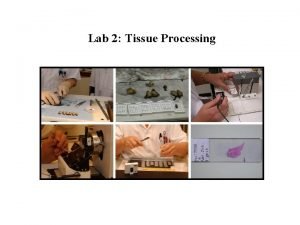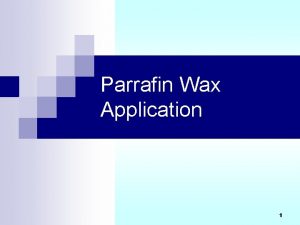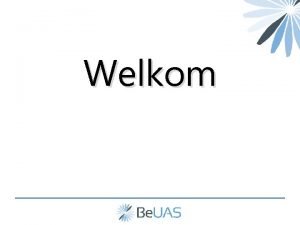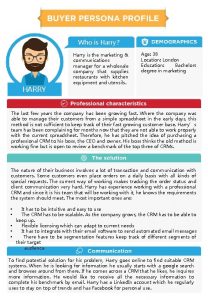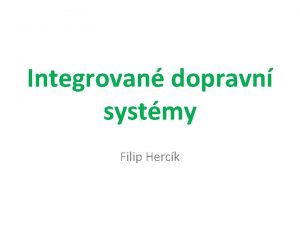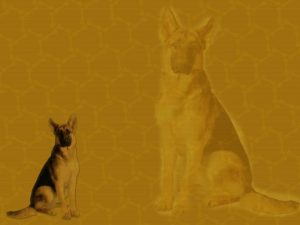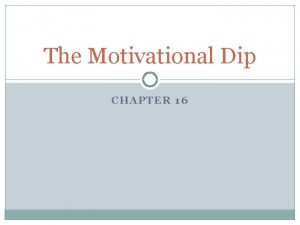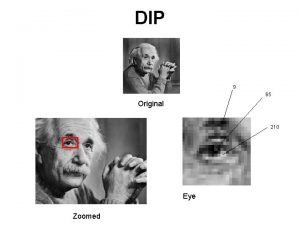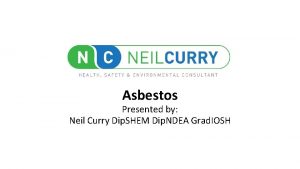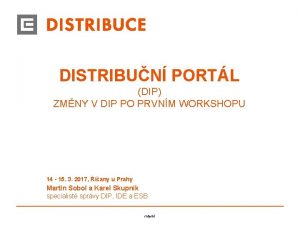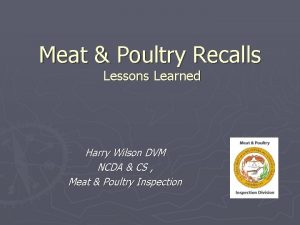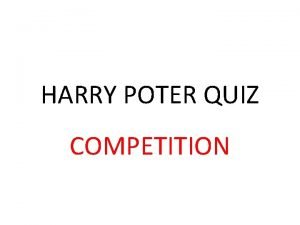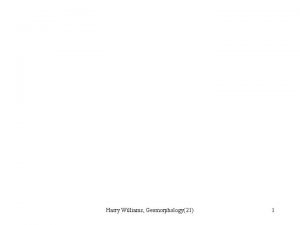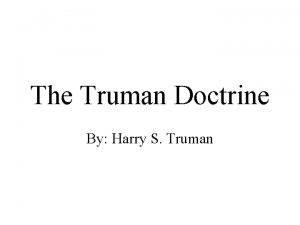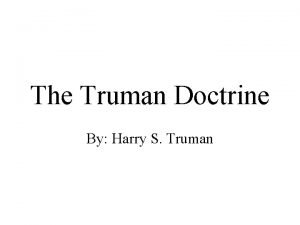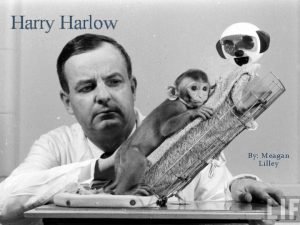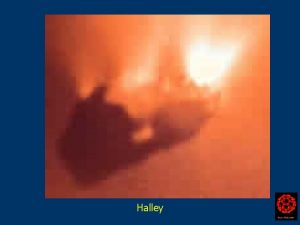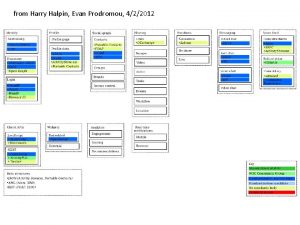Harry van Herck DVM Ph D Dip ECLAM






































- Slides: 38

Harry van Herck DVM, Ph. D, Dip ECLAM Head Animal Facility Amsterdam Medical Centre H. van. Herck@AMC. NL Lab Animal Standards: AAALAC Accreditation

AAALAC (1965) AAALAC International (1996) Harry van Herck & AAALAC International § Utrecht University: first AAALAC accredited university outside US (ISO – AAALAC – GLP) § AAALAC ad hoc 2000 - 2005 § AAALAC Council member 2005 - 2017 § AAALAC emeritus 2017 - ….

Overview of presentation The AAALAC organisation The concept of an ”Animal Care and Use Program” (ACUP) AAALAC’s accreditation process AAALAC – ISO –GLP

AAALAC International is a private, nonprofit organization that promotes the humane treatment of animals in science through voluntary assessment and accreditation programs. 2018: over 1000 accredited institutional animal care and use programs in 47 countries

Organisation Board of Directors Member Organizations (scientific associations) Staff (North America – Europe – Pac. Rim) Council on Accreditation – 5 sections (independent professionals) Ad hoc consultants

Overview of presentation The AAALAC organisation The concept of an ”Animal Care and Use Program” (ACUP) AAALAC’s accreditation process AAALAC – ISO –GLP

Concept of Programme AAALAC accredits research animal care and use programmes (ACUP) “…means the policies, procedures, standards, organizational structure, staffing, facilities, and practices put into place by an institution to achieve the humane care and use of animals in the laboratory and throughout the institution. ”

Elements of an ACUP:

Animal Care and Use Programme Management: Responsibilities: Institutional Official, Designated Veterinarian Personnel Management: Training, Education, Competence Occupational Health and Safety of Personnel Programme Oversight: Ethics Committee/AWB: ethical review process Composition/Function Protocol Review Post-Approval Monitoring, etc + Oversight of all aspects of the ACUP ….

ACUP Environment, Housing, and Management Animal Environment (micro and macro): Temp. , humidity, ventilation, light, noise, vibration, aquatics Animal Housing: Primary enclosures (cages, pens; outdoor meadows& stables) Env. Enrichment, Social and Behavioural Management Animal Facility Management: Husbandry: food, water, bedding, sanitation, waste disposal, pest control, emergency/holiday care Population Management: Identification and records, genetics and nomenclature

ACUP Veterinary Care Animal Procurement and Transportation Preventive Medicine: Biosecurity, quarantine, stabilization, health status, surveillance, diagnosis, treatment and control of disease Clinical Care and Management: Emergency, records, resources, drug control Surgery: Planning, facilities, procedures, asepsia, monitoring, post-op Pain/Distress; Anaesthesia/Analgesia; Euthanasia

ACUP Physical Plant Location and Construction Guidelines Functional Areas and Operations: Heating, Ventilation and Air Conditioning (HVAC) Power and lighting Malfunctions Storage Areas Sanitising Facilities Special Facilities: Specialized housing, surgery, imaging, other Security and Access Control

Overview of presentation The AAALAC organisation The concept of an ”Animal Care and Use Program” (ACUP) AAALAC’s accreditation process AAALAC – ISO –GLP

Programme Status Evaluation (PSE) –optional. Programme Description (PD): defined format (EU version) self evaluation Site visit: > 1 Co. A + x ad hoc (every 3 years!) Post Site Visit Communication PSVC Programme Evaluation (PE) Electronic reviews by Co. A members Accreditation Process Meeting Co. A: 3/year (evaluation) (Co. A decides, not SVors) Outcome (letter to institution)

Site visit Date arranged with the Unit (key people present) • Introductory Briefing • Review of the Programme Description - questions • Tour of the facilities – more questions • Lunch – Meeting with members of Eth. Comm. / OHS • Continue Tour of the facilities (if needed) • Review of Documentation • Executive Meetingof site visitors - prepare exit briefing • Exit Briefing – preliminary findings of site visitors

Site visit or … A B A: obligatory inspection; objective: plaque at the door B: voluntary peer review: help to improve animal welfare and science

Site visit, animals present?

Findings Mandatory Items • Issues which may endanger animal/personnel health or wellbeing; or non compliance with legal requirements • MUST be corrected to obtain Full Accreditation Suggestions for improvement (SFI) • Will up-grade programme in the opinion of Council • SHOULD/MIGHT be corrected (voluntary)

Overview of presentation The AAALAC organisation The concept of an ”Animal Care and Use Program” (ACUP) AAALAC’s accreditation process Engineering standards versus Performance standards Possible outcomes of the accreditation process AAALAC – ISO –GLP

ETS 123 (Appendix A) Ag Guide PERFORMANCE STANDARDS ENGINEERING STANDARDS

Example Ethical Review (ER) Government • Competent Authorities (National Committees) External • Contracted Committees Institutional • Ethics Committees/IACUC (Animal Welfare Bodies)

AAALAC: Performance Based Approach (Ethical Review) • Is there an effective evaluation of research proposals? • Do all animals used for research, teaching or testing belong to an approved protocol and are they provided effective oversight? • Is animal use being conducted in accordance with the approved proposals? • Are there appropriate institutional policies and are they followed?

AAALAC: Performance Based Approach (ACUP-Review) • Is there a routine and effective evaluation of the animal care and use program? • Are the key institutional representatives (e. g. , the Institutional Official) informed of the outcome of the ethical review process? • Are corrective actions taken when/if deviations are identified? • Do all personnel involved in the process have the appropriate training and competence?

Example Cage Washing ¿ ?

Cage Washing Whether the sanitation process is automated or manual, regular evaluation of sanitation effectiveness is recommended. This can be performed by evaluating processed materials by microbiologic culture or the use of organic material detection systems (e. g. , adenosine triphosphate [ATP] bioluminescence) and/or by confirming the removal of artificial soil applied to equipment surfaces before washing. Guide p. 73 Question in AAALAC Program Description Describe how the effectiveness of sanitisation procedures is monitored (e. g. , water temperature monitoring, microbiological monitoring, visual inspections, etc. ).

Freq. cage change http: //www. aaalac. org/accreditation/faq_landing. cfm#C 1 • At least once a week, though it may be less frequent (e. g: IVC) • Use of performance standards • Engagement of Oversight Body

Sanitation wire-bar lids

Standards - Conclusions • Engineering and performance standards co-exist in units. • Performance standards: balance your rules to provide sufficient flexibility, but avoid confusion. Define outcome • Once you have defined your standards and procedures (based on professional judgment) – stick to them. • Performance standards require an active and engaged “oversight body” (assessment of the outcome)

Overview of presentation The AAALAC organisation The concept of an ”Animal Care and Use Program” (ACUP) AAALAC’s accreditation process Engineering standards versus Performance standards Possible outcomes of the accreditation process AAALAC – ISO –GLP

Accreditation status First application • Award Full Accreditation Unit is accredited (may have SFIs) • Award Accreditation with Condition Accredited but Mand. correction(s) needed • Award Provisional Status NOT accredited, Mand. issues to be corrected in up to 24 months • Withhold Accreditation NO accreditation. Appeal optional

Accreditation status Accredited Units – revisits (every 3 years) • Continued Full Accreditation • Conditional Accreditation Accredited, Mand. Correction(s) needed • Deferred Accreditation Accredited, Mand. issue(s) to be solved in up to 2 months • Probation Accredited, Mand. issues to be solved in up to 12 months • Revoke Accreditation Possible appeal

Overview of presentation The AAALAC organisation The concept of an ”Animal Care and Use Program” (ACUP) AAALAC’s accreditation process Engineering standards versus Performance standards Possible outcomes of the accreditation process AAALAC quality; ISO –GLP

Benefits - AAALAC • AAALAC Quality • Self evaluation: challenge tradition • Engagement in a continuous improvement process • External evaluation: confidential, peer review • team building within full ACUP at the institution, including: • OHS, Maintenance, Animal Services, QAU, ER/ AWB / OB, Management

Benefits - AAALAC • Continuous improvement in animal welfare (promotion of 3 R) • Pride in the work place (animal care people) • Promotes scientific validity • Demonstrates accountability • Facilitates funding (specially from NIH) • Provides assurance in a global market place

Quality level International accreditation harmonisation countries Legal requirements…

AAALAC – ISO - GLP Similarities - Differences • voluntary (AAALAC, ISO) vs mandatory (GLP) • institutional interest (all) • focus on animal interests (AAALAC > ISO, GLP) • resources needed, QAU… (GLP > ISO > AAALAC) • international recognition (depending on the field) • management support (all) • specialization of inspectors/site visitors (AAALAC > ISO, GLP) • confidentiality (all) • can be combined!

www. aaalac. org

https: //www. aaalac. org/news/Global-3 Rs-Awards. cfm
 How to measure strike and dip with a compass
How to measure strike and dip with a compass Trend plunge dip dip direction
Trend plunge dip dip direction Dvm valuation method
Dvm valuation method Wendy blount dvm
Wendy blount dvm Medial saphenous vein cat
Medial saphenous vein cat Lyme disease map
Lyme disease map Speuter
Speuter Integrating type dvm
Integrating type dvm Roger clemmons dvm
Roger clemmons dvm Sap marketplace launchpad
Sap marketplace launchpad Roger clemmons dvm
Roger clemmons dvm Catherine brown dvm
Catherine brown dvm Mount pleasant tx animal shelter
Mount pleasant tx animal shelter Patricia jordan dvm
Patricia jordan dvm Patrick sullivan dvm
Patrick sullivan dvm Roger clemmons dvm
Roger clemmons dvm Jennifer hatcher dvm age
Jennifer hatcher dvm age Roger clemmons dvm
Roger clemmons dvm Wendy blount dvm
Wendy blount dvm Tracy turner dvm
Tracy turner dvm Wendy blount
Wendy blount Wendy blount dvm
Wendy blount dvm Dip 2015
Dip 2015 Ana paula maciel
Ana paula maciel Dip your toes meaning
Dip your toes meaning Strike and dip
Strike and dip Types of adjacency in image processing
Types of adjacency in image processing Hardman resources
Hardman resources Dip air conditioning
Dip air conditioning Dip plateau kt droit
Dip plateau kt droit Ductile
Ductile Double dip finance
Double dip finance Dip of ribs business analysis
Dip of ribs business analysis Vulvovaginite fotos
Vulvovaginite fotos Dual inline package use
Dual inline package use Kinh thánh xuất ê díp tô ký
Kinh thánh xuất ê díp tô ký Decalcification
Decalcification Strike in geology
Strike in geology Parrafin wax
Parrafin wax
